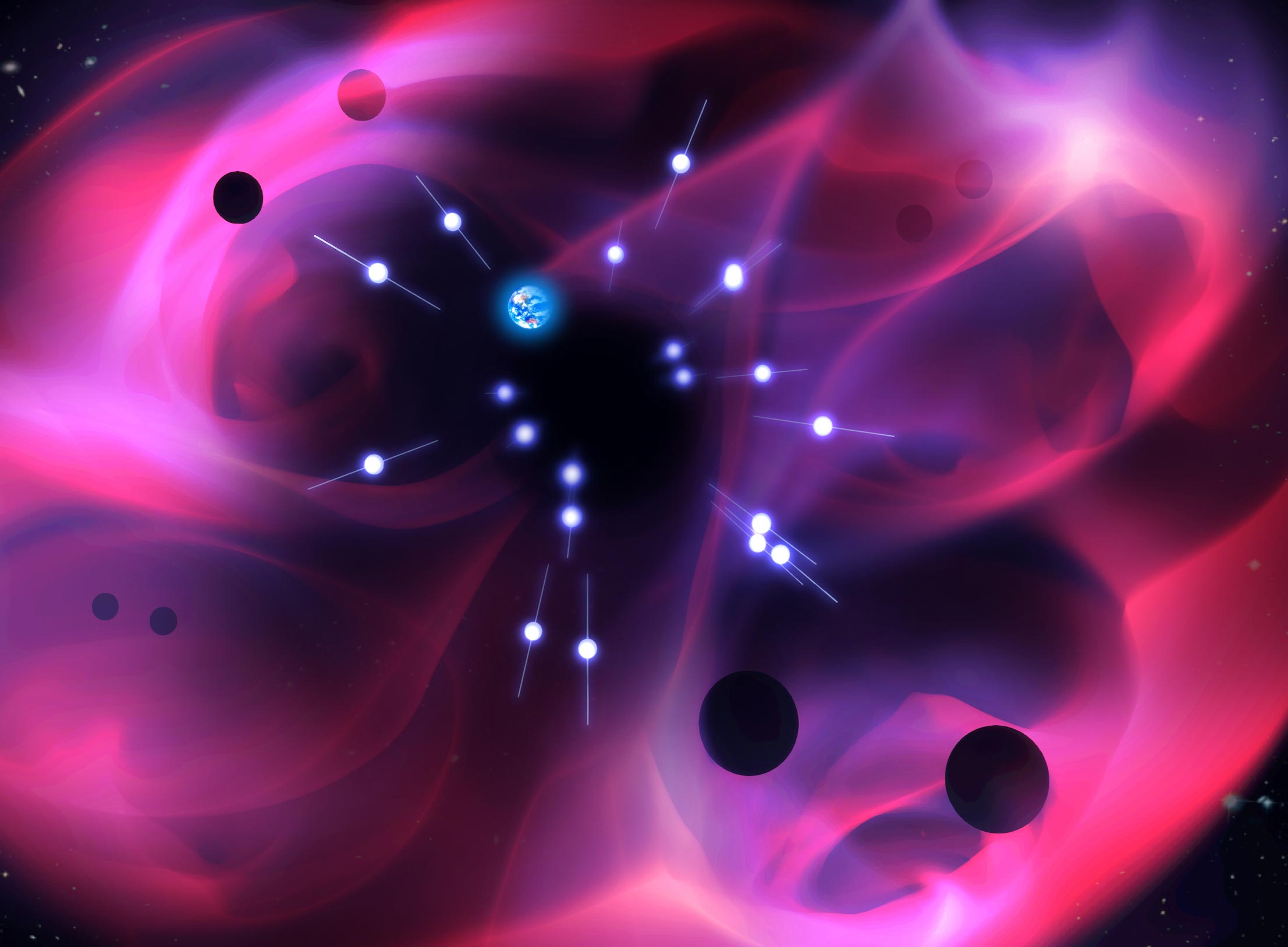
Intriguingly, the first indication of a gravitational wave background would be a common signal like that seen in the IPTA DR2.
Whether or not this spectrally similar ultra-low frequency signal is correlated between pulsars in accordance with the theoretical predictions will be resolved with further data collection, expanded arrays of monitored pulsars, and continued searches of the resulting longer and larger data sets.
The IPTA DR2 analysis demonstrates the power of the international combination giving strong evidence for a gravitational wave background compared to the marginal or absent evidence from the constituent data sets.
Additionally, new data from the MeerKAT telescope and from the Indian Pulsar Timing Array (InPTA), the newest member of the IPTA, will further expand future data sets.
“The first hint of a gravitational wave background would be a signal like that seen in the IPTA DR2.Then, with more data, the signal will become more significant and will show spatial correlations, at which point we will know it is a gravitational wave background.
We are very much looking forward to contributing several years of new data to the IPTA for the first time, to help achieve a gravitational wave background detection,” says Dr.
Given the latest published results from the individual groups who now all can clearly recover the common signal, the IPTA is optimistic for what can be achieved once these are combined into the IPTA Data Release 3.Work is already ongoing on this new data release, which at a minimum will include updated data sets from the four constituent PTAs of the IPTA?
Maura McLaughlin of the NANOGrav collaboration says, “If the signal we are currently seeing is the first hint of a gravitational wave background, then based on our simulations, it is possible we will have more definite measurements of the spatial correlations necessary to conclusively identify the origin of the common signal in the near future.”.
Reference: “The International Pulsar Timing Array second data release: Search for an isotropic Gravitational Wave Background” by J Antoniadis, Z Arzoumanian, S Babak, M Bailes, A-S Bak Nielsen, P T Baker, C G Bassa, B Bécsy, A Berthereau, M Bonetti, A Brazier, P R Brook, M Burgay, S Burke-Spolaor, R N Caballero, J A Casey-Clyde, A Chalumeau, D J Champion, M Charisi, S Chatterjee, S Chen, I Cognard, J M Cordes, N J Cornish, F Crawford, H T Cromartie, K Crowter, S Dai, M E DeCesar, P B Demorest, G Desvignes, T Dolch, B Drachler, M Falxa, E C Ferrara, W Fiore, E Fonseca, J R Gair, N Garver-Daniels, B Goncharov, D C Good, E Graikou, L Guillemot, Y J Guo, J S Hazboun, G Hobbs, H Hu, K Islo, G H Janssen, R J Jennings, A D Johnson, M L Jones, A R Kaiser, D L Kaplan, R Karuppusamy, M J Keith, L Z Kelley, M Kerr, J S Key, M Kramer, M T Lam, W G Lamb, T J W Lazio, K J Lee, L Lentati, K Liu, J Luo, R S Lynch, A G Lyne, D R Madison, R A Main, R N Manchester, A McEwen, J W McKee, M A McLaughlin, M B Mickaliger, C M F Mingarelli, C Ng, D J Nice, S Osłowski, A Parthasarathy, T T Pennucci, B B P Perera, D Perrodin, A Petiteau, N S Pol, N K Porayko, A Possenti, S M Ransom, P S Ray, D J Reardon, C J Russell, A Samajdar, L M Sampson, S Sanidas, J M Sarkissian, K Schmitz, L Schult, A Sesana, G Shaifullah, R M Shannon, B J Shapiro-Albert, X Siemens, J Simon, T L Smith, L Speri, R Spiewak, I H Stairs, B W Stappers, D R Stinebring, J K Swiggum, S R Taylor, G Theureau, C Tiburzi, M Vallisneri, E Wateren, A Vecchio, J P W Verbiest, S J Vigeland, H Wahl, J B Wang, J Wang, L Wang, C A Witt, S Zhang, X J Zhu, 12 January 2022, Monthly Notices of the Royal Astronomical Society.